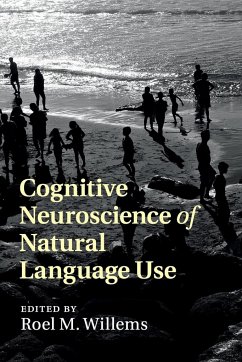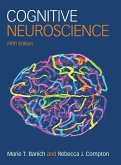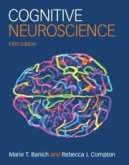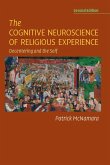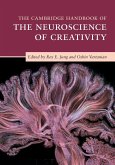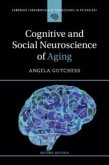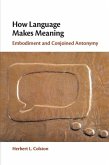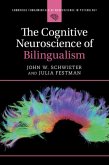Cognitive Neuroscience of Natural Language Use
Herausgeber: Willems, Roel
Cognitive Neuroscience of Natural Language Use
Herausgeber: Willems, Roel
- Broschiertes Buch
- Merkliste
- Auf die Merkliste
- Bewerten Bewerten
- Teilen
- Produkt teilen
- Produkterinnerung
- Produkterinnerung
Can we study the brain basis of language, as we use it in our daily lives? In this book, a range of international experts provide a state-of-the-art overview of current approaches to the cognitive neuroscience of natural language use.
Andere Kunden interessierten sich auch für
![Cognitive Neuroscience Cognitive Neuroscience]() Marie T. Banich (University of Colorado Boulder)Cognitive Neuroscience164,99 €
Marie T. Banich (University of Colorado Boulder)Cognitive Neuroscience164,99 €![Cognitive Neuroscience Cognitive Neuroscience]() Marie T. Banich (University of Colorado Boulder)Cognitive Neuroscience56,99 €
Marie T. Banich (University of Colorado Boulder)Cognitive Neuroscience56,99 €![The Cognitive Neuroscience of Religious Experience The Cognitive Neuroscience of Religious Experience]() McNamara, Patrick, Ph.D. (Boston University)The Cognitive Neuroscience of Religious Experience36,99 €
McNamara, Patrick, Ph.D. (Boston University)The Cognitive Neuroscience of Religious Experience36,99 €![The Cambridge Handbook of the Neuroscience of Creativity The Cambridge Handbook of the Neuroscience of Creativity]() The Cambridge Handbook of the Neuroscience of Creativity106,99 €
The Cambridge Handbook of the Neuroscience of Creativity106,99 €![Cognitive and Social Neuroscience of Aging Cognitive and Social Neuroscience of Aging]() Angela Gutchess (Massachusetts Brandeis University)Cognitive and Social Neuroscience of Aging33,99 €
Angela Gutchess (Massachusetts Brandeis University)Cognitive and Social Neuroscience of Aging33,99 €![How Language Makes Meaning How Language Makes Meaning]() Herbert L. Colston (University of Alberta)How Language Makes Meaning31,99 €
Herbert L. Colston (University of Alberta)How Language Makes Meaning31,99 €![The Cognitive Neuroscience of Bilingualism The Cognitive Neuroscience of Bilingualism]() John W. Schwieter (Ontario Wilfrid Laurier University)The Cognitive Neuroscience of Bilingualism31,99 €
John W. Schwieter (Ontario Wilfrid Laurier University)The Cognitive Neuroscience of Bilingualism31,99 €-
-
-
Can we study the brain basis of language, as we use it in our daily lives? In this book, a range of international experts provide a state-of-the-art overview of current approaches to the cognitive neuroscience of natural language use.
Produktdetails
- Produktdetails
- Verlag: Cambridge University Press
- Seitenzahl: 304
- Erscheinungstermin: 13. Januar 2017
- Englisch
- Abmessung: 229mm x 152mm x 16mm
- Gewicht: 492g
- ISBN-13: 9781108402682
- ISBN-10: 1108402682
- Artikelnr.: 47739771
- Herstellerkennzeichnung
- Libri GmbH
- Europaallee 1
- 36244 Bad Hersfeld
- gpsr@libri.de
- Verlag: Cambridge University Press
- Seitenzahl: 304
- Erscheinungstermin: 13. Januar 2017
- Englisch
- Abmessung: 229mm x 152mm x 16mm
- Gewicht: 492g
- ISBN-13: 9781108402682
- ISBN-10: 1108402682
- Artikelnr.: 47739771
- Herstellerkennzeichnung
- Libri GmbH
- Europaallee 1
- 36244 Bad Hersfeld
- gpsr@libri.de
1. Cognitive neuroscience of natural language use: introduction Roel M.
Willems; 2. fMRI methods for studying the neurobiology of language under
naturalistic conditions Michael Andric and Steven L. Small; 3. Why study
connected speech production? Sharon Ash and Murray Grossman; 4. Situation
models in naturalistic comprehension Christopher A. Kurby and Jeffrey M.
Zacks; 5. Language comprehension in rich non-linguistic contexts: combining
eye tracking and event related brain potentials Pia Knoeferle; 6. The NOLB
model. A model of the natural organization of language and the brain Jeremy
I. Skipper; 7. Towards a neurocognitive poetics model of literary reading
Arthur M. Jacobs; 8. Putting Broca's region into context - fMRI evidence
for a role in predictive language processing Line Burholt Kristensen and
Mikkel Wallentin; 9. Towards a multi-brain perspective on communication in
dialogue Anna K. Kuhlen, Carsten Allefeld, Silke Anders and John-Dylan
Haynes; 10. On the generation of shared symbols Arjen Stolk, Mark Blokpoel,
Iris van Rooij and Ivan Toni; 11. What are naturalistic comprehension
paradigms teaching us about language? Uri Hasson and Giovanna Egidi.
Willems; 2. fMRI methods for studying the neurobiology of language under
naturalistic conditions Michael Andric and Steven L. Small; 3. Why study
connected speech production? Sharon Ash and Murray Grossman; 4. Situation
models in naturalistic comprehension Christopher A. Kurby and Jeffrey M.
Zacks; 5. Language comprehension in rich non-linguistic contexts: combining
eye tracking and event related brain potentials Pia Knoeferle; 6. The NOLB
model. A model of the natural organization of language and the brain Jeremy
I. Skipper; 7. Towards a neurocognitive poetics model of literary reading
Arthur M. Jacobs; 8. Putting Broca's region into context - fMRI evidence
for a role in predictive language processing Line Burholt Kristensen and
Mikkel Wallentin; 9. Towards a multi-brain perspective on communication in
dialogue Anna K. Kuhlen, Carsten Allefeld, Silke Anders and John-Dylan
Haynes; 10. On the generation of shared symbols Arjen Stolk, Mark Blokpoel,
Iris van Rooij and Ivan Toni; 11. What are naturalistic comprehension
paradigms teaching us about language? Uri Hasson and Giovanna Egidi.
1. Cognitive neuroscience of natural language use: introduction Roel M.
Willems; 2. fMRI methods for studying the neurobiology of language under
naturalistic conditions Michael Andric and Steven L. Small; 3. Why study
connected speech production? Sharon Ash and Murray Grossman; 4. Situation
models in naturalistic comprehension Christopher A. Kurby and Jeffrey M.
Zacks; 5. Language comprehension in rich non-linguistic contexts: combining
eye tracking and event related brain potentials Pia Knoeferle; 6. The NOLB
model. A model of the natural organization of language and the brain Jeremy
I. Skipper; 7. Towards a neurocognitive poetics model of literary reading
Arthur M. Jacobs; 8. Putting Broca's region into context - fMRI evidence
for a role in predictive language processing Line Burholt Kristensen and
Mikkel Wallentin; 9. Towards a multi-brain perspective on communication in
dialogue Anna K. Kuhlen, Carsten Allefeld, Silke Anders and John-Dylan
Haynes; 10. On the generation of shared symbols Arjen Stolk, Mark Blokpoel,
Iris van Rooij and Ivan Toni; 11. What are naturalistic comprehension
paradigms teaching us about language? Uri Hasson and Giovanna Egidi.
Willems; 2. fMRI methods for studying the neurobiology of language under
naturalistic conditions Michael Andric and Steven L. Small; 3. Why study
connected speech production? Sharon Ash and Murray Grossman; 4. Situation
models in naturalistic comprehension Christopher A. Kurby and Jeffrey M.
Zacks; 5. Language comprehension in rich non-linguistic contexts: combining
eye tracking and event related brain potentials Pia Knoeferle; 6. The NOLB
model. A model of the natural organization of language and the brain Jeremy
I. Skipper; 7. Towards a neurocognitive poetics model of literary reading
Arthur M. Jacobs; 8. Putting Broca's region into context - fMRI evidence
for a role in predictive language processing Line Burholt Kristensen and
Mikkel Wallentin; 9. Towards a multi-brain perspective on communication in
dialogue Anna K. Kuhlen, Carsten Allefeld, Silke Anders and John-Dylan
Haynes; 10. On the generation of shared symbols Arjen Stolk, Mark Blokpoel,
Iris van Rooij and Ivan Toni; 11. What are naturalistic comprehension
paradigms teaching us about language? Uri Hasson and Giovanna Egidi.

